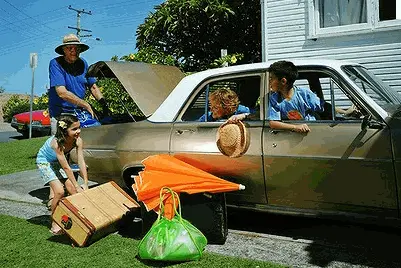How to Save Money on Gas and Arrive Safely
As the weather warms up, the open road invites us to jump in our vehicles, roll down the windows and turn up the radio. But with gas prices high, drivers are looking for ways to enhance their fuel economy before hitting the pavement.
“Don’t let the price of gasoline spoil the fun of your family road trip,” says Jim MacPherson, car care expert and automotive radio host for WTIC-AM in Connecticut. “By taking a few simple steps you can save money at the pump and ensure the family vehicle is ready to reach your destination safely.”
As a show host, MacPherson is often asked questions about fuel economy, vehicle maintenance and driver safety, particularly as drivers prepare for summer road trips. Here are some of the most common questions callers ask, and his responses to them.
Q: We plan on driving to our destination for the family vacation this year. Are there ways we can keep gasoline costs down?
A: Yes, there are several things you can do to enhance fuel economy. For starters, take your vehicle in for a basic tune up. A poorly tuned engine will burn more fuel. Also, keep tires inflated to the proper pressure levels and change the air filter regularly. Consider switching to a fuel efficient motor oil such as Mobil 1 Advanced Fuel Economy. It can deliver up to 2 percent(a) fuel economy improvement, and this fully synthetic motor oil will protect your engine in extreme temperatures. For additional cost savings, travel in a mid-size sedan, rather than taking a full-size SUV. If you’re concerned about the space consider shipping recreational equipment to your destination or renting items once you have arrived.
Q: What checks of the vehicle should we make before starting out?
A: Plan ahead for your next road trip and schedule a maintenance service at least two weeks prior to heading out. This will allow for plenty of time for repairs should your mechanic find a problem. A full check of the vehicle’s safety systems will give you peace of mind while driving long distances. Most importantly, be sure the vehicle’s tires and brakes are in proper working order.
Q: Are there any driving tips to make the trip more economical?
A: Allow plenty of time to reach your destination so you’re not tempted to speed. Driving at high speeds creates wind resistance and burns more fuel. When possible, try to keep rapid acceleration and braking to a minimum, as this can decrease fuel economy. Also, if your vehicle is equipped with cruise control, I recommend using it. Cruise control smoothes surges in acceleration and places the driver’s view on the road ahead as opposed to responding to every shift in traffic around them.
Q: I’ve heard that a dirty car can hurt your fuel economy. Is that true?
A: Actually, yes. The dirt on your car’s exterior creates drag that, over long distances, reduces your miles-per-gallon. Keeping your vehicle washed and waxed will improve your vehicle’s aerodynamics, improving your fuel economy. You’ll also feel good about driving around in a clean vehicle.
Q: We are going to need to use the rooftop carrier on our vehicle, but the warning label calls for a very low weight limit. Is the roof really capable of supporting only 175 pounds?
A: These weight limits are often established with vehicle control and handling in mind. Items latched to a roof rack raise the vehicle’s center of gravity. Check your owner’s manual and follow the weight restrictions on the warning labels to ensure safe travels.
For more information about Mobil 1 products call 1-800-MOBIL25 or visit http://www.mobil1.com
(a) Delivers up to 2% fuel economy improvement. Based on a comparison versus those grades most commonly used and a potential 2% fuel economy improvement. Actual savings are dependent upon vehicle/engine type, outside temperature, driving conditions, and your current engine oil viscosity.



